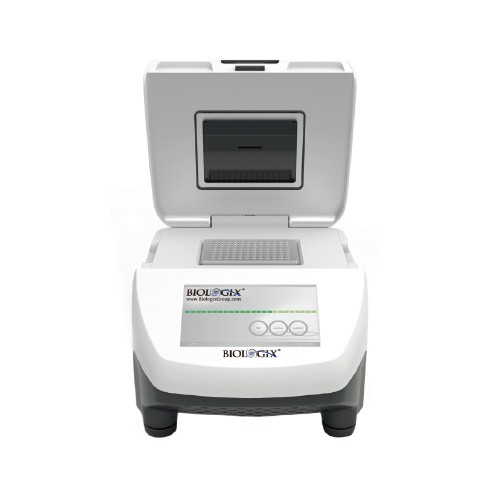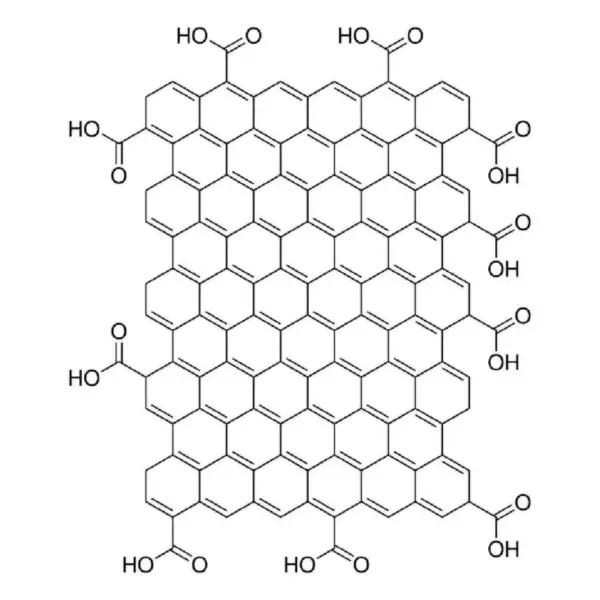
Gentamycin 256 M.I.C.E. (10 Pack)
RM0.00Brand:
Thermo ScientificTM OxoidTM
**This product is not available at the moment.
Effortlessly establish accurate Minimum Inhibitory Concentration (MIC) values manually using Thermo Scientific™ Oxoid™ Gentamycin M.I.C.Evaluator Strips (M.I.C.E.™).

Gentamycin 256 M.I.C.E. (50 Pack)
RM0.00Brand:
Thermo ScientificTM OxoidTM
**This product is not available at the moment.
Effortlessly establish accurate Minimum Inhibitory Concentration (MIC) values manually using Thermo Scientific™ Oxoid™ Gentamycin M.I.C.Evaluator Strips (M.I.C.E.™).

Gibberellin 80% gibberellin A3 basis (TLC) (Sigma-Aldrich)
RM3,572.00Brand:
Sigma
Description
Formula : C19H22O6
Molecular weight : 346.37 g/mol
Synonym : GA3
A “classical” ubiquitous plant hormone, with diverse effects, such as stilumating stem and root growth, and stimulating seed germination.

Giemsa’s Azur Eosin Methylene Blue Solution (Merck)
RM139.00Brand:
Merck
**This product has been discontinued, please contact us for more information.
Description
The Giemsa’s Azure Eosin Methylene Blue solution can be used for the staining of blood and bone marrow smears, paraffin sections and clinical-cytological specimens. Giemsa staining is one of the standard procedures in histology, demonstrating various cells with their morphological features better than with H&E stain. The Giemsa stain can also be used to detect Helicobacter pylori in gastric tissue biopsies. The specimen material will show cell nuclei stained in various shades of blue, while other structures will appear in various red types. It is an IVD product and CE registered.
Application
For microscopy. For the staining of blood and bone-marrow smears, paraffin sections and clinical-cytological specimens

Giolitti-Cantoni Broth 500g
RM0.00Brand:
Thermo ScientificTM OxoidTM
An anaerobic enrichment broth for Staphylococcus aureus.
Giolitti-Cantoni Broth, Oxoid Composition
| Typical Formula* | gm/litre |
| Tryptone | 10.0 |
| `Lab-Lemco’ powder | 5.0 |
| Yeast extract | 5.0 |
| Lithium chloride | 5.0 |
| Mannitol | 20.0 |
| Sodium chloride | 5.0 |
| Glycine | 1.2 |
| Sodium pyruvate | 3.0 |
| pH 6.9 ± 0.2 @ 25°C |
Giolitti-Cantoni Broth, Oxoid Preparation:
Suspend 54.2g in one litre of distilled water and heat gently to dissolve. Dispense 19ml amounts into 20 x 200mm test tubes and sterilise by autoclaving at 121°C for 15 minutes. Cool rapidly then aseptically add to each tube 0.3ml of a sterile solution of Potassium tellurite 3.5% SR0030.
The medium requires the addition of a 3.5% solution of Potassium tellurite when there is a direct addition of 1g of the sample to 19mls of broth. This level of Potassium tellurite is necessary to suppress the high numbers of contaminating organisms that could be expected.
The use of a diluted solution of Potassium tellurite is applicable when a 1 in 10 dilution of the food sample is carried out. In such cases the SR0030 should first be diluted 1 in 10 with sterile distilled water.
The addition of 0.1% Tween 80 can be recommended in order to improve recovery of heat injured Staphylococcus aureus cells e.g. from milk powder. 1g of Tween 80 should be added to 1 litre of CM0523 prior to autoclaving.
Storage conditions and Shelf life
Store the dehydrated medium at 10-30°C and use before the expiry date on the label.
Store the prepared medium at 2-8°C.
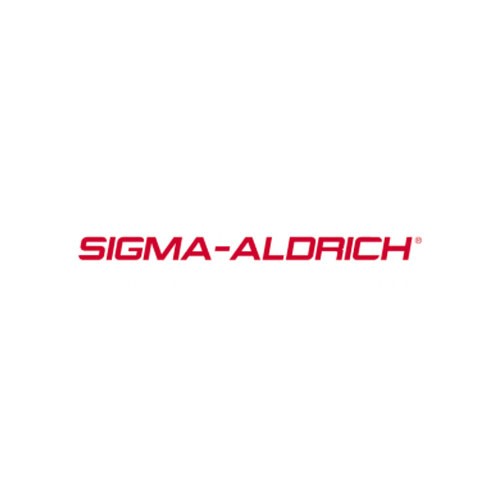
Glutathione, Certified Reference Material (Sigma-Aldrich)
RM547.00Brand:
Sigma-Aldrich
Description
CAS number: 70-18-8
Chemical Formula: H2NCH(CO2H)CH2CH2CONHCH(CH2SH)CONHCH2CO2H
Molar Mass: 307.32g/mol
Synonyms: γ-L-Glutamyl-L-cysteinyl-glycine, L-Glutathione reduced, GSH
Amino Acid Sequence
γ-Glu-Cys-Gly
General description
Glutathione (GSH) is the most important nonprotein thiol widely distributed in animal tissues, plants, and microorganisms. GSH is also a key determinant of redox signalling and protection against oxidative stress.
Pharmaceutical secondary standards for application in quality control, provide pharma laboratories and manufacturers with a convenient and cost-effective alternative to the preparation of in-house working standards.
Application
HPLC: suitable
Gas Chromatography (GC): suitable
These Secondary Standards are qualified as Certified Reference Materials. These are suitable for use in several analytical applications including but not limited to pharma release testing, pharma method development for qualitative and quantitative analyses, food and beverage quality control testing, and other calibration requirements.
May be used at 5-10 mM to elute glutathione S-transferase (GST) from glutathione agarose.
Biochem/physiol Actions
Endogenous antioxidant that plays a major role in reducing reactive oxygen species formed during cellular metabolism and the respiratory burst. Glutathione-S-transferase catalyzes the formation of glutathione thioethers with xenobiotics, leukotrienes, and other molecules that have an electrophilic center. Glutathione also forms disulfide bonds with cysteine residues in proteins. Via these mechanisms, it can have the paradoxical effect of reducing the efficacy of anti-cancer agents.
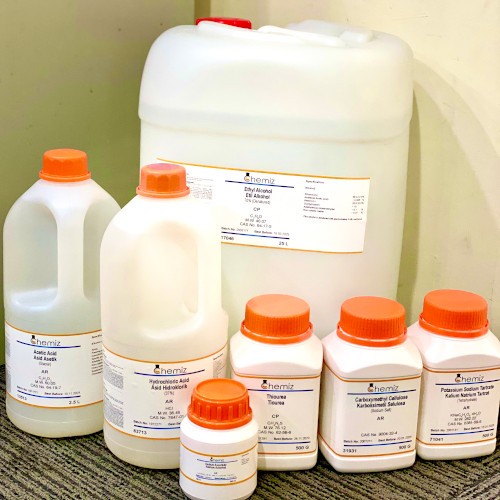
Glycerol (Glycerine) AR, 2.5L
RM64.00Brand:
Chemiz
Description
Synonyms: Glycerine
Formula: C3H8O3
Analytical reagent grade glycerol for various laboratory uses including gel formation for polyacrylamide gel, altering density of liquids and prevention of freezing for certain samples when stored.
Note:
AR: Analitycal Reagent Grade: Reagents for analytical purpose or research work that need high purity.
CP: Chemically Pure Grade: Reagents for regular practical in its original purity.

Glycerol, For Molecular Biology, ≥99.0% (Sigma-Aldrich)
RM565.00Brand:
Sigma-Aldrich
Description
CAS number: 56-81-5
Chemical Formula: HOCH2CH(OH)CH2OH
Molar Mass: 92.09 g/mol
Synonyms: 1,2,3-Propanetriol, Glycerin
General description
Glycerol is odourless, colourless, viscous in nature, and exists as a sweet-tasting liquid. It can be derived naturally as well as from petrochemical feedstock. Glycerol has a wide variety of applications and is one of the most valuable and versatile chemical substances in nature. It can be used as an emollient, solvent, sweetening agent, in pharmaceutical formulations, cosmetics, foodstuffs and toiletries. It is very stable and can be easily stored under normal temperature; also it is non-irritating and has no adverse impact on the environment.
Application
Glycerol has been used as:
• A supplement during cell culture of Mycobacterium tuberculosis and Mycobacterium avium.
• A fuel during designing enzymatic biofuel cell.
• A liquid composite matrix with 4-HCCA and 3-aminoquinoline for analysis of neutral and acidic glycans.
• A matrix for fast atom bombardment MS.
• May be employed as liquid matrix for the quantification studies by MALDI (Matrix-assisted laser desorption/ionization mass spectrometry) analysis.
Glycerol is used both in sample preparation and gel formation for polyacrylamide gel electrophoresis. Glycerol (5-10%) increases the density of a sample so that the sample will layer at the bottom of a gel′s sample well. Glycerol is also used to aid in casting gradient gels and as a protein stabilizer and storage buffer component.
Glycerol is used both in sample preparation and gel formation for polyacrylamide gel electrophoresis. Glycerol (5-10%) increases the density of a sample so that the sample will layer at the bottom of a gel’s sample well. Glycerol is also used to aid in casting gradient gels and as a protein stabilizer and storage buffer component.

Glycine AR, 500g
RM61.00Brand:
Chemiz
Description
Synonyms: 2-Aminoacetic acid
Formula: C2H5NO2
Glycine is an important component for some solution used in polyacrylamide gel electrophoresis method in protein analysis, acting as buffer to maintain pH level to prevent damage to the sample during analysis.
Note:
AR: Analitycal Reagent Grade: Reagents for analytical purpose or research work that need high purity.
CP: Chemically Pure Grade: Reagents for regular practical in its original purity.

Goat anti-Mouse, FITC conjugate
RM1,010.00Brand:
Merck
** This product has been discontinued.
Description
Immunoglobulin G (IgG) is a multimeric immunoglobulin, built of two heavy chains γ and two light chains. Each complex has two antigen binding sites. It is one of the most abundant proteins in human serum with normal levels between 8-17 mg/ml in adult blood. IgG is important for our defense against microorganisms and the molecules are produced by B lymphocytes as a part of our adaptive immune response. The IgG molecule has two separate functions; to bind to the pathogen that elicited the response and to recruit other cells and molecules to destroy the antigen. Furthermore, this is the only isotype that can pass through the human placenta, thereby providing protection to the fetus in its first weeks of life before its own immune system has developed. The variability of the IgG pool is generated by somatic recombination and the number of specificities in an individual at a given time point is estimated to be 1011 variants.
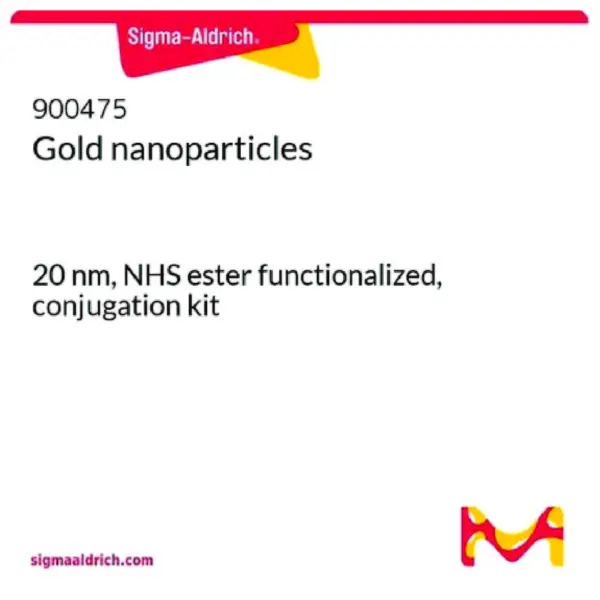
Gold nanoparticles, 20 nm, NHS ester functionalized, conjugation kit – Sigma-Aldrich
RM1,687.00Brand:
Sigma-Aldrich
Synonyms
NHS-activated gold nanoparticles
Cas No.
–
General description
Gold nanoparticles, 20 nm, NHS ester functionalized, conjugation kit is a comprehensive kit that enables easy, one-step conjugation of your amine-containing ligands to 20 nm gold nanoparticles. The kit includes pre-made mixtures of lyophilized (freeze-dried) NHS-activated gold nanoparticles, along with all the necessary materials for three independent conjugation reactions. The kit components comprise:
- 3 vials of 20 nm NHS-Activated Gold Nanoparticles (lyophilized)
- Protein Resuspension Buffer – 1.5ml
- Reaction Buffer – 1.5ml
- Quencher Solution – 1.5ml
- Reaction protocol
The gold nanoparticles in this kit are supplied as a lyophilized (freeze-dried) mixture. The conjugation reaction is initiated by simply reconstituting the freeze-dried nanoparticles with the protein of interest, which attaches to the nanoparticle surface via lysine residues. The gold conjugation procedure has a quick hands-on time of around 10 minutes, and the conjugate is fully ready for use within 3 hr. Researchers only need to pipette the biomolecule into a vial containing the nanoparticles, quench the reaction, and perform product washing through microcentrifugation.
The provided protocol is optimized for highly efficient covalent conjugation, resulting in stable gold nanoparticle conjugates. Optional protocol steps involve additional materials, such as 10% aqueous BSA (126615) and Tris saline resuspension buffer (PPB002), which are sold separately.
Application
This gold conjugation kit streamlines the process of conjugating your proteins or biomolecules to 20 nm gold nanoparticles. Gold conjugation helps researchers to visualize and assay a specific protein or antibody of interest. Gold conjugates are useful in a wide range of applications like lateral flow testing, immunoblotting, immuno-electron microscopy, immunohistochemical staining, and other bio-assays.
Different sizes of gold nanoparticles perform better in specific applications. For lateral flow and flow cytometry, we recommend using gold nanoparticles with diameters between 20 nm and 100 nm. For immunoblotting or immuno-electron microscopy, the optimal range is 5 nm to 40 nm. For bioassays utilizing dynamic light scattering, gold nanoparticles with diameters ranging from 60 nm to 100 nm are suggested.
Features and Benefits
- The resulting covalent conjugates offer greater stability compared to those prepared using passive adsorption methods.
- Fast and convenient conjugation reaction with no need for pre-activation.
- A spacer between the gold nanoparticle surface and the conjugated ligand minimizes the impact on the tertiary protein structure. This reduces the likelihood of poor performing conjugates, a common issue encountered with conjugates prepared by passive adsorption.
- Gold surface coating is precisely engineered to minimize non-specific protein binding in biological assays.
Legal Information
Product of CytoDiagnostics, Inc.

Gold nanoparticles, 5 nm, NHS ester functionalized, conjugation kit – Sigma-Aldrich
RM1,772.00Brand:
Sigma-Aldrich
Synonyms
NHS-activated gold nanoparticles
Cas No.
–
General description
Gold nanoparticles, 5 nm, NHS ester functionalized, conjugation kit is a comprehensive kit that enables easy, one-step conjugation of your amine-containing ligands to 5 nm gold nanoparticles. The kit includes pre-made mixtures of lyophilized (freeze-dried) NHS-activated gold nanoparticles, along with all the necessary materials for three independent conjugation reactions. The kit components comprise:
- 3 vials of 5 nm NHS-Activated Gold Nanoparticles (lyophilized)
- Protein Resuspension Buffer – 1.5ml
- Reaction Buffer – 1.5ml
- Quencher Solution – 1.5ml
- Reaction protocol
The gold nanoparticles in this kit are supplied as a lyophilized (freeze-dried) mixture. The conjugation reaction is initiated by simply reconstituting the freeze-dried nanoparticles with the protein of interest, which attaches to the nanoparticle surface via lysine residues.
The gold conjugation procedure has a quick hands-on time of around 10 minutes, and the conjugate is fully ready for use within 3 hr. Researchers only need to pipette the biomolecule into a vial containing the nanoparticles, quench the reaction, and perform product washing through microcentrifugation.
The provided protocol is optimized for highly efficient covalent conjugation, resulting in stable gold nanoparticle conjugates. Optional protocol steps involve additional materials, such as 10% aqueous BSA (126615) and Tris saline resuspension buffer (PPB002), which are sold separately.
Application
This gold conjugation kit streamlines the process of conjugating your proteins or biomolecules to 5 nm gold nanoparticles. Gold conjugation helps researchers to visualize and assay a specific protein or antibody of interest. Gold conjugates are useful in a wide range of applications like lateral flow testing, immunoblotting, immuno-electron microscopy, immunohistochemical staining, and other bio-assays.
Different sizes of gold nanoparticles perform better in specific applications. For lateral flow and flow cytometry, we recommend using gold nanoparticles with diameters between 20 nm and 100 nm. For immunoblotting or immuno-electron microscopy, the optimal range is 5 nm to 40 nm. For bioassays utilizing dynamic light scattering, gold nanoparticles with diameters ranging from 60 nm to 100 nm are suggested.
Features and Benefits
- The resulting covalent conjugates offer greater stability compared to those prepared using passive adsorption methods.
- Fast and convenient conjugation reaction with no need for pre-activation.
- A spacer between the gold nanoparticle surface and the conjugated ligand minimizes the impact on the tertiary protein structure. This reduces the likelihood of poor performing conjugates, a common issue encountered with conjugates prepared by passive adsorption.
- Gold surface coating is precisely engineered to minimize non-specific protein binding in biological assays.
Legal Information
Product of CytoDiagnostics, Inc.

Gold nanoparticles, 50 nm, NHS ester functionalized, conjugation kit – Sigma-Aldrich
RM1,178.00Brand:
Sigma-Aldrich
Synonyms
NHS-activated gold nanoparticles
Cas No.
–
General description
Gold nanoparticles, 50 nm, NHS ester functionalized, conjugation kit is a comprehensive kit that enables easy, one-step conjugation of your amine-containing ligands to 50 nm gold nanoparticles. The kit includes pre-made mixtures of lyophilized (freeze-dried) NHS-activated gold nanoparticles, along with all the necessary materials for three independent conjugation reactions. The kit components comprise:
- 3 vials of 50 nm NHS-Activated Gold Nanoparticles (lyophilized)
- Protein Resuspension Buffer – 1.5ml
- Reaction Buffer – 1.5ml
- Quencher Solution – 1.5ml
- Reaction protocol
The gold nanoparticles in this kit are supplied as a lyophilized (freeze-dried) mixture. The conjugation reaction is initiated by simply reconstituting the freeze-dried nanoparticles with the protein of interest, which attaches to the nanoparticle surface via lysine residues.
The gold conjugation procedure has a quick hands-on time of around 10 minutes, and the conjugate is fully ready for use within 3 hr. Researchers only need to pipette the biomolecule into a vial containing the nanoparticles, quench the reaction, and perform product washing through microcentrifugation.
The provided protocol is optimized for highly efficient covalent conjugation, resulting in stable gold nanoparticle conjugates. Optional protocol steps involve additional materials, such as 10% aqueous BSA (126615) and Tris saline resuspension buffer (PPB002), which are sold separately.
Application
This gold conjugation kit streamlines the process of conjugating your proteins or biomolecules to 50 nm gold nanoparticles. Gold conjugation helps researchers to visualize and assay a specific protein or antibody of interest. Gold conjugates are useful in a wide range of applications like lateral flow testing, immunoblotting, immuno-electron microscopy, immunohistochemical staining, and other bio-assays.
Different sizes of gold nanoparticles perform better in specific applications. For lateral flow and flow cytometry, we recommend using gold nanoparticles with diameters between 20 nm and 100 nm. For immunoblotting or immuno-electron microscopy, the optimal range is 5 nm to 40 nm. For bioassays utilizing dynamic light scattering, gold nanoparticles with diameters ranging from 60 nm to 100 nm are suggested.
Features and Benefits
- The resulting covalent conjugates offer greater stability compared to those prepared using passive adsorption methods.
- Fast and convenient conjugation reaction with no need for pre-activation.
- A spacer between the gold nanoparticle surface and the conjugated ligand minimizes the impact on the tertiary protein structure. This reduces the likelihood of poor performing conjugates, a common issue encountered with conjugates prepared by passive adsorption.
- Gold surface coating is precisely engineered to minimize non-specific protein binding in biological assays.
Legal Information
Product of CytoDiagnostics, Inc.
Gradient Thermocycler
RM0.00Brand:
Biologix
Thermocyclers are widely used in molecular biology, clinical diagnosis, criminal investigation, and infectious disease research, among other fields. They are essential laboratory equipment for researchers who run polymerase chain reactions (PCR) for sequencing, cloning, genotyping, mutagenesis, and many other applications. 01-7000 has a gradient function that enables setting different temperature ranges for different parts of the same heating block, making it easy to identify optimal annealing temperatures in a single run.
Features
Please contact us for pricing and availability.
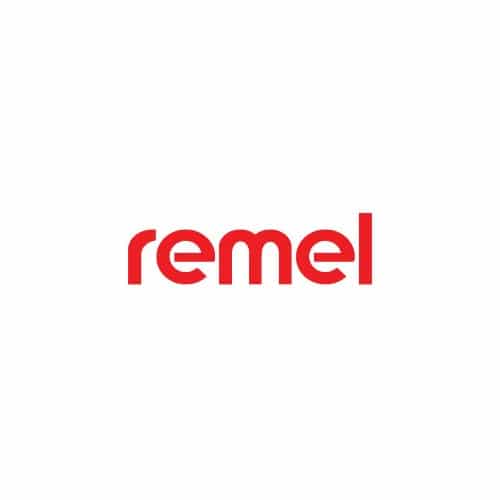
Gram Crystal Violet BTLx5/250ml
RM804.00Brand:
Thermo Scientific™ Remel™
Thermo Scientific™ Remel Gram Crystal Violet is a primary stain in Gram stain procedures.
- For qualitative procedures to differentiate gram-positive from gram-negative microorganisms
- Selected Gram stains are CE marked

Gram Decolorizer BTLx5/250ml
RM567.00Brand:
Thermo Scientific™ Remel™
Thermo Scientific™ Remel Gram Decolorizer is a decolorizing reagent used in Gram stain procedures.
- For qualitative procedures to differentiate gram-positive from gram-negative microorganisms
- Selected Gram stains are CE marked

Gram Iodine 250ml Bottle
RM238.00Brand:
Thermo Scientific™ Remel™
Thermo Scientific™ Remel Gram Iodine is a mordant used in Gram stain procedures.
- For qualitative procedures to differentiate gram-positive from gram-negative microorganisms
- Selected Gram stains are CE marked

Gram Iodine Btlx5/250 Ml
RM782.00Brand:
Thermo Scientific™ Remel™
Thermo Scientific™ Remel Gram Iodine is a mordant used in Gram stain procedures.
- For qualitative procedures to differentiate gram-positive from gram-negative microorganisms
- Selected Gram stains are CE marked

Gram Safranin BTL/250ml
RM413.00Brand:
Thermo Scientific™ Remel™
Thermo Scientific™ Remel Gram Safranin is a counterstain used in Gram stain procedures.
- For qualitative procedures to differentiate gram-positive from gram-negative microorganisms
- Selected Gram stains are CE marked

Gram Safranin BTLx5/250ml
RM571.00Brand:
Thermo Scientific™ Remel™
Thermo Scientific™ Remel™ Gram Safranin is a counterstain used in Gram stain procedures.
- For qualitative procedures to differentiate gram-positive from gram-negative microorganisms
- Selected Gram stains are CE marked

Gram Stain Set 4 x 250mL w/ Tray
RM294.00Brand:
Thermo Scientific™ Remel™
Thermo Scientific™ Remel Gram Stain Kit (without tray) is for qualitative procedures to differentiate gram-positive from gram-negative microorganisms.
- Includes: Crystal Violet; Decolorizer; Iodine; Safranin
(The image is for illustrative purposes only.)

Gram-Color Stain set for the Gram staining method-Merck
RM0.00Brand:
Merck
Description
Gram-Color – stain set for the Gram staining method, is used for human-medical cell diagnosis and serves the purpose of the bacteriological investigation of sample material of human origin, for example smears of body fluids. The Gram-Color solutions are modified and designed in such a way that staining can be carried out in staining cells, on the staining rack, and also in automated staining systems. Gram-color modified, phenol-free is a staining set for staining microorganisms. Aniline dyes in the cell tissue of microorganisms form a red dye-iodine complex when exposed to iodine. Sodium hydrogen carbonate enhances the formation of this complex further still. In gram-positive microorganisms the dye-iodine complex cannot be subsequently dissolved from the cells by decolorizing agents such as alcohol or acetone. The cell remains dark blue in color. In gram-negative microorganisms the dye-iodine complex is dissolved and the cell turns red as a result of counterstaining with fuchsin. Gram-color modified, phenol-free is an IVD / CE product.
The package is sufficient for 250 applications. For further information, please see the IFU which can be found in the kit.
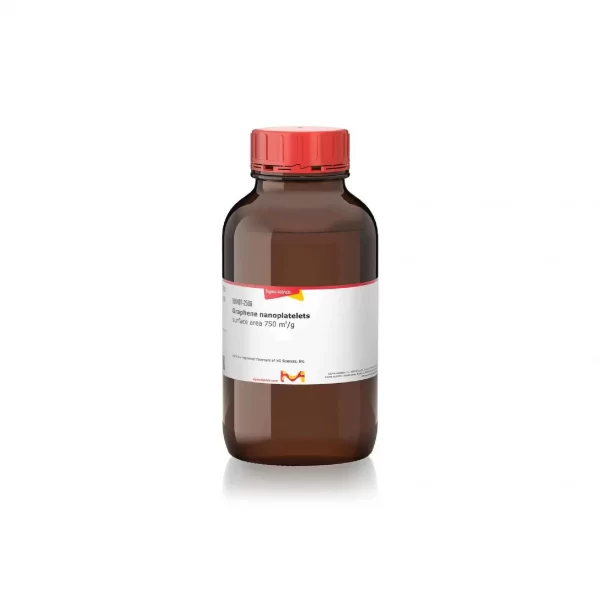
Graphene Nanoplatelets, Sigma – Aldrich
RM1,054.00Brand:
Sigma
Description
CAS number: 7782-42-5
Molecular weight:12.01
Synonyms: GNPs, xGnP® graphene nanoplatelets-grade C-750
xGnP® graphene nanoplatelets are a unique type of nanoparticle that have a platelet shape and are composed of short stacks of graphene sheets. Their distinctive size and morphology make them highly effective at providing barrier properties, as well as excellent electrical and thermal conductors due to their pure graphitic composition. Additionally, incorporating xGnP® graphene nanoplatelets can enhance mechanical properties such as stiffness, strength, and surface hardness of the matrix material.
Applications include:
- Ultracapacitor electrodes.
- Anode materials for lithium-ion batteries.
- Conductive additive for battery electrodes.
- Electrically conductive inks.
- Thermally conductive films and coatings.
- Additive for lightweight composites.
- Films or coatings for EMI shielding.
- Substrate for chemical and biochemical sensors.
- Barrier material for packaging.
- Additive for super-strong concrete.
- Additive for metal-matrix composites.
Graphene oxide dispersion, 2 mg/mL,dispersion in H2O – Sigma-Aldrich
RM1,781.00Brand:
Sigma-Aldrich
Synonyms
Graphene oxide aqueous dispersion
Cas No.
–
General description
- Chloride free (purified by dialysis)
- Monolayer sheet
- sheet diameter <10 micron
Graphene oxide (GO) is a one atom thick 2D carbon material with excellent thermal, mechanical, and electrical properties due to its unique structural and morphological features. GO can be easily dispersed in aqueous and polar organic solvents to facilitate its practical use. It can be synthesized by modified Hummer’s method. It can be applied in the fields of drug delivery, energy storage, oil-water separation, immobilization catalysis, desalination, and solar cells.
We are committed to bringing you Greener Alternative Products, which adhere to one or more of The 12 Principles of Greener Chemistry. This product belongs to Enabling category of greener alternatives thus aligns with “Design for energy efficency”. High concentrated graphene oxide sheets provide the prerequisite viscosity to bind the electrode materials together and enable 3D printing. Using water as a green solvent makes this aqueous ink system feasible for processing and drying safety and low cost. Click here for more information.
Application
Because of the presence of oxygen-containing functional groups and acidic nature, GO can serve as both carbocatalyst as well as a supporting scaffold for various catalytically active species. GO can facilitate many organic transformations such as the oxidation of sulfides, olefins, and various hydrocarbons, Friedel–Crafts reaction, Aza–Michael additions, condensation, and ring-opening polymerization.
It can be used as a support for biocatalysis in organic solvents. For example, carboxyl-functionalized graphene oxide can act as a support to immobilize Yarrowia lipolytica lipase. The immobilized enzyme exhibits a high efficiency for the resolution of the racemic compound in the organic solvent.
It can also be used as a hole transport layer in organic photovoltaic cells.
Features and Benefits
- Good solution processability
- Hydrophilic and easily dispersed in water
- Low production cost
- Presence of rich active oxygen-containing functional groups
- It can be easily functionalized
Large surface area, high chemical stability, good charge carrier properties.[1]
Preparation Note
Product may aggregate over time to form larger particles. Sonicate before use if single layer graphene oxide required.


